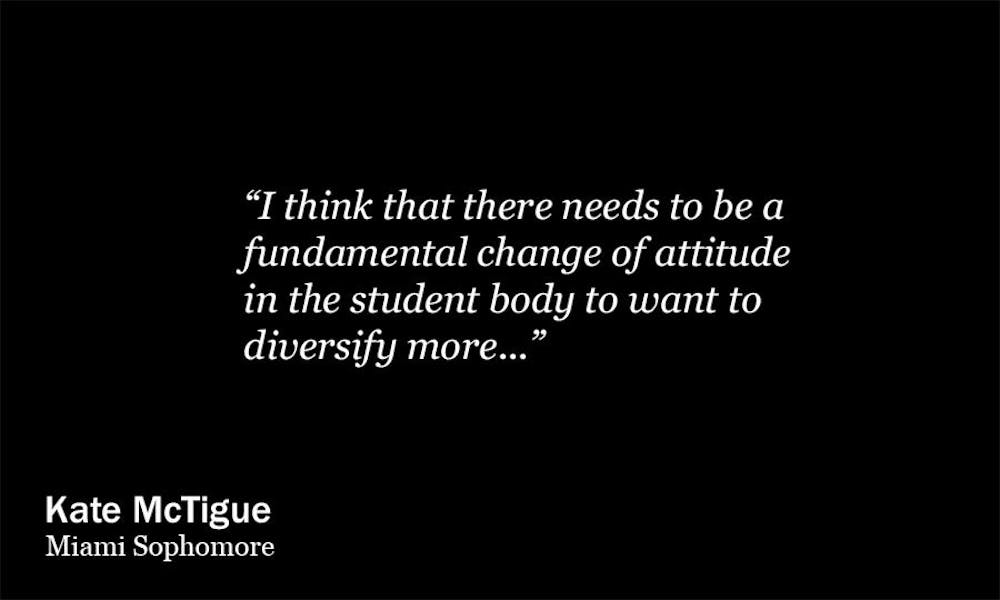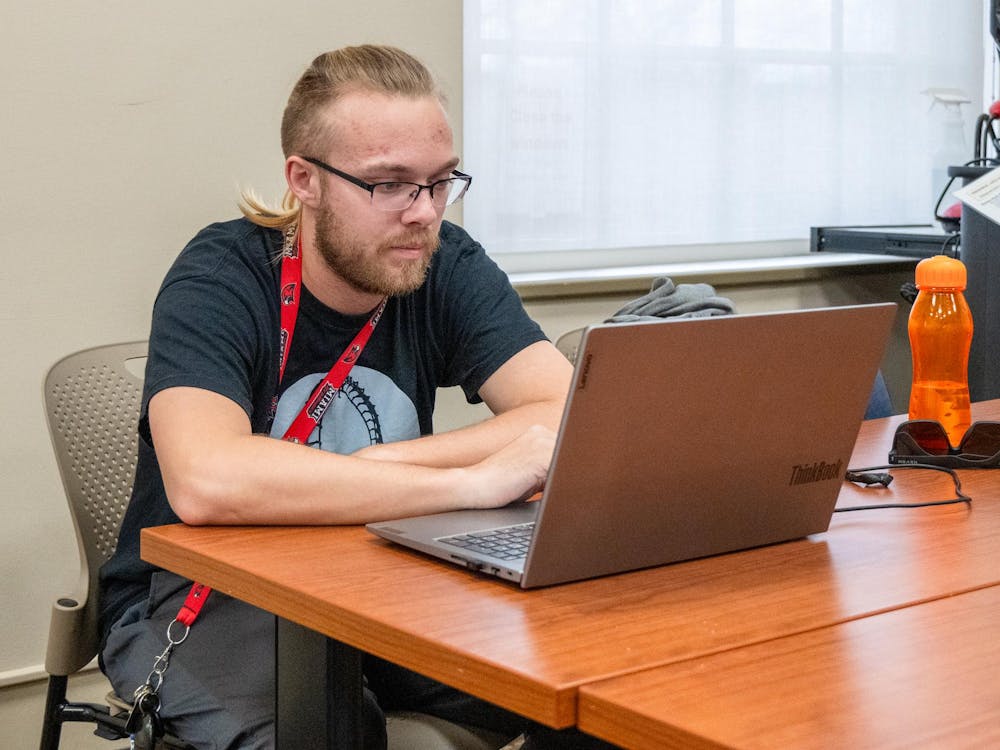By Ceili Doyle, Senior Staff Writer
Race. Religion. Gender. Orientation. Disability. Nationality. All of these attributes are only a tiny portion of what comprises the tenets of diversity, and they act as a set of characteristics between what sets apart one student from another on Miami University's campus.
As part of a process to further the educational development of Miami, the university commissioned EducationCounsel last April to "cultivate a more welcoming and inclusive learning, working and living environment to advance student, staff and faculty success," according to an email from President Gregory Crawford on Sept. 21.
The EducationCounsel's response compiled a hefty list of challenges Miami faces in its attempts to include others within part three of its Report on Diversity and Inclusion at Miami University.
Specifically the report mentions that "anger, disappointment, and distrust from various students, faculty and staff" were consistently displayed throughout the meetings conducted by the EducationCounsel regarding Miami's commitment to diversity and inclusion on campus.
Many interviewees felt "othered" -- in other words, they are seen as a part of a group that does not fit in the 'traditional' (ie. upper income, white) Miami mold, according to part three, number two of the "Challenges and Foundations for Improvement at Miami: Key Takeaways from Our Stakeholder Meetings" section of the report.
As a result to the challenges aforementioned in addition to the rest of the EducationCounsel's report, Crawford has responded by establishing the President's Task Force to develop a university-wide policy statement on the educational value of diversity and inclusion.
"Diversity and inclusion to me are about recognizing the full humanity, equality and diginity of every person regardless of difference in background, race, culture, identity, nationality, perspective or any other distinctive feature," Crawford said.
The members of the President's Task Force include Bennyce Hamilton, Kelley Kimple, Ron Scott and Liz Wardle. Hamilton and Kimple are also members of the Council on Diversity and Inclusion (CODI), and Scott is both the Associate Vice President for Institutional Diversity and co-chair of CODI.
"EducationCounsel charged us to come up with a clear statement that articulates why or what Miami sees as the educational value, societal value of diversity," Scott said. "That essentially is the only focus of the task force -- to come up with a single statement for the institution that [acts] as a preamble to a diversity plan."
The EducationalCounsel laid out four specific goals that should be addressed through the development of this policy statement on diversity and inclusion at Miami:
1. Clear articulation of the educational and societal benefits of student diversity as an institutional value and priority.
Enjoy what you're reading?
Signup for our newsletter
2. Recognition that Miami seeks broad student diversity.
3. Identification of any Miami-specific context or history that may bear on diversity.
4. An inclusive process of development and approval.
In addition to drafting a mission statement, CODI will work in conjunction with the President's Task Force to "develop a comprehensive and sustainable plan for diversity and inclusive excellence," according to the "Charge to the President's Task Force To Develop a Policy Statement on Diversity and Inclusion" issued by Crawford and emailed to students, staff and faculty on Oct. 21.
Student reaction to the EducationCounsel's report has been mixed. There is a sense that the university can do more toward including all walks of life on campus, but no direction or significant plan has been provided to or established by the student body thus far.
"I do think that the student body as a whole can do better to include others, but the how is a little harder," sophomore Kate McTigue said. "I think that there needs to be a fundamental change of attitude in the student body to want to diversify more and include others."




